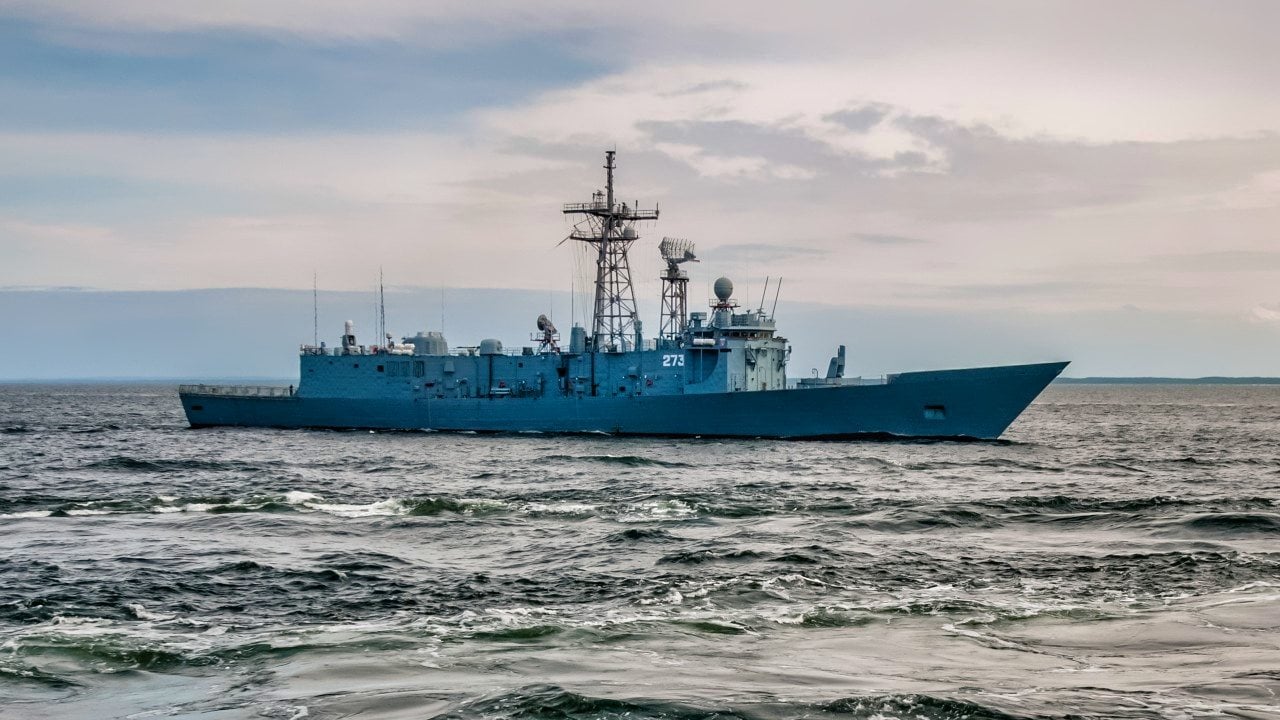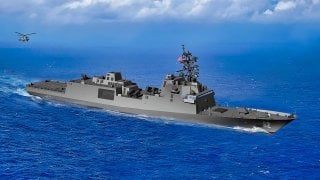Constellation-class Frigates: The U.S. Navy Warship That Does It All
The U.S. Navy awarded a $1 billion contract to Marinette Marine for two additional Constellation-class frigates, which are under construction and progressing well.
Summary: The U.S. Navy awarded a $1 billion contract to Marinette Marine for two additional Constellation-class frigates, which are under construction and progressing well.

-These next-generation frigates are designed for versatile operations in both open waters and littoral environments.
-Equipped with advanced sensors and weapon systems, including the Enterprise Air Surveillance Radar, Aegis Combat System, and Mk 41 Vertical Launch System, they are built for air, anti-submarine, surface, and electromagnetic warfare.
-With the first ship, USS Constellation, set for initial capability by 2026, these frigates will enhance the Navy's readiness for potential conflicts, particularly in the Indo-Pacific against China.
U.S. Navy Expands Constellation-Class Frigate Fleet with $1 Billion Contract
The U.S. Navy awarded a $1 billion contract to Marinette Marine for an additional two Constellation frigates.
The new class of warships is currently under construction, but the Navy is pleased with the progress of the program and exercised its right under the contract to buy an additional two vessels from the new class of frigates.
The Constellation-class Frigates, Explained
According to the Navy, the new class of frigates will be able to operate both in open water and littoral environments.
“The Constellation-Class Guided-Missile Frigate (FFG 62) represents the Navy’s next generation small surface combatant,” the Navy states about the new class of frigates.
The Constellation-class frigates will be equipped with a combination of weapon systems and sensors so that they can conduct air warfare, anti-submarine warfare, surface warfare, and electromagnetic warfare. In terms of sensors and weapon systems, the new warships will carry an Enterprise Air Surveillance Radar (EASR), Baseline Ten (BL10) Aegis Combat System, and a Mk 41 Vertical Launch System.
“This ship class will be an agile, multi-mission warship, capable of operations in both blue-water and littoral environments, providing increased combat-credible forward presence that provides a military advantage at sea,” the Navy adds.
Currently, one ship, the USS Constellation is under construction, and five more under contract. In total, the Navy plans to purchase up to 20 vessels. Construction on the USS Constellation began on September 2022, and the Navy expects to have it an initial operating capability by 2026.
The Constellation-class is the first class of frigates in the U.S. Navy since the venerable Oliver Hazard Perry frigates that served from the mid-1970s to the early 2000s.

The Constellation-class frigates are based on the European Multipurpose Frigate, or FREMM, which has been in service with several European navies, including the French and Italian. As such, the program is moving according to the timeline—often a major issue with procurement programs that tend to be delayed—and the Navy will likely have its warships as scheduled. In terms of costs, the USS Constellation will cost approximately $1.4 billion, and subsequent ships of the class will be around the $1 billion mark.
With an Eye Toward China
Although during the two decades or so of the Global War on Terror in the Middle East and South Asia, the Navy played a very small part in the operations—mainly fire and logistical support to the war efforts—in a potential conflict with China in the Indo-Pacific, the Navy will be at the front and center of combat.
A potential Chinese invasion of Taiwan would require the U.S. Navy to respond in force and try to get control of the seas so it can support operations on land, as well as deny access to enemy aircraft in certain zones.
Warships like the future Constellation class frigates will be able to undertake both offensive and defensive missions in the area of operations, either providing air defense for a carrier battle group, hunting enemy submarines, or taking the fight to enemy targets inland or on the sea.
About the Author
Stavros Atlamazoglou is a seasoned defense journalist specializing in special operations and a Hellenic Army veteran (national service with the 575th Marine Battalion and Army HQ). He holds a BA from Johns Hopkins University and an MA from the Johns Hopkins School of Advanced International Studies (SAIS). His work has been featured in Business Insider, Sandboxx, and SOFREP.
All images are Creative Commons.
More from National Interest


